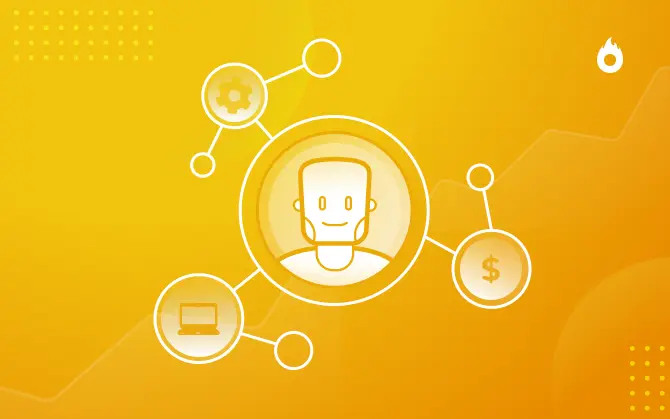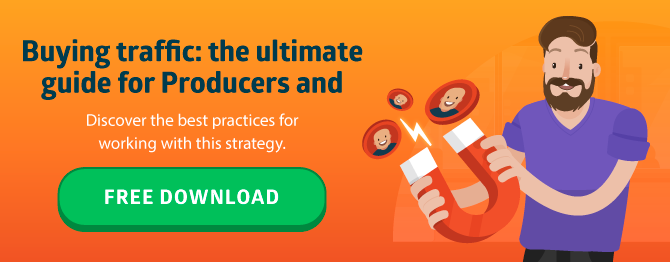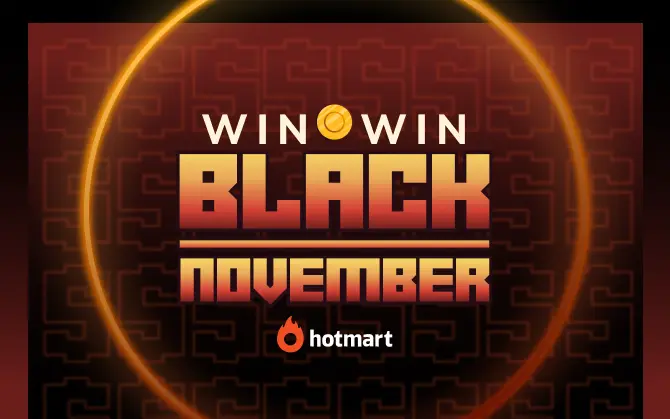
How to Buy Website Traffic
8 tips for beginners. Find out how to buy traffic for your website and how to track its effectiveness.

One of the biggest questions when someone starts selling online, either as a creator or as an affiliate, is how to buy website traffic and whether it’s truly worth it.
Like almost everything on the internet, buying traffic has its pros and cons.
One of the advantages is that the Return on Investment (ROI) of the actions is fully measurable and allows you to perform A/B tests with your ads.
One of the disadvantages is that if you don’t have a throughout knowledge of how it works, it could lead to high expenditure with little return.
What does the term “buy website traffic” mean?
The first step to buying website traffic masterfully is to understand this term’s basic concept.
Buying traffic is nothing more than the set of strategies in which you will need to invest money to attract people to your offer.
Your goal might vary, whether it is:
- Only promoting your brand
- Building a list of leads
- Or even directing people to a product’s landing page through the promotion of your link.
These strategies will be very important to provide predictability in sales and can be used for launches or for perpetual products.
For this reason, I’ll provide you with a few tips to help you buy website traffic with more confidence. Let’s get started.
VIDEO: PAID OR ORGANIC TRAFFIC: Which is BETTER if you’re just GETTING STARTED? | Hotmart Tips
How to buy website traffic
1. Understand the persona
Understanding the buyer persona of your product or of the product to which you’ve become an Affiliate is the first step.
This tip might seem silly but it’s the basis for all the guidelines to buy website traffic and is one of the steps that few people truly carry out.
The persona will provide you with insights about the interests of a given product, about people’s intent to purchase, how they behave and in which channels they are present.
This information is extremely important in order to answer a few important questions, such as:
- What is my persona’s pain/desire?
- Which offer will generate value?
- Which ad platform should I choose?
- What is the most appropriate discourse in each ad?
This knowledge about your persona will ensure that your offer truly solves their pain/desire, which will help you spend less for each conversion made with paid campaigns.
VIDEO: How to create a buyer persona for your business | Hotmart Tips
2. Define your offer
Now that you know your persona well, your offer must be well aligned with the person’s pain or desire in order to make them go to your website, sign up to your list or purchase a product.
If you want to create a list of leads, you should think about the content formats your persona is used to consuming and define your format.
These formats vary from eBooks to webinars, remembering that the content must always solve the pain/desire you wish to address.
If you want to buy website traffic for more advanced steps of the funnel, you can create an ad that will direct the person directly to the landing page through your hotlink, so that they can make the purchase.
An example of a copy that can direct a person who wishes to lose weight directly to the landing page of a weight-loss product would be:
Check out this method that is helping people lose up to 10 pounds in a month!
It’s an offer that would be aligned with the person’s pain and that would direct them straight to a page with further information about the product.
View this post on Instagram
3. Define the right channels for buying traffic
Choosing the most suitable channels for your persona will help you not to waste money.
Imagine that you decide to buy website traffic on Instagram and that your persona doesn’t use this channel. You’d have spent money and would probably not see any results, right?
Therefore, it’s important to get to know your persona and to buy traffic on the channels most frequently used by them.
Below, I’ll talk about the most popular channels if you’re not already familiar with them.
Google Ads
Google Ads is a platform that enables the creation of campaigns to be displayed on search results, which are the ads shown when we google a term, and also on the display network, which are websites that are partners with Google and provide space for advertisers.
For search campaigns, the ads will be created based on the keywords you choose and the locations you defined.
In order to define the best words, which are those with a high volume and low competition, you can use the Google Keyword Planner.
The ads displayed here are exclusively in text format.
For display campaigns, you can create responsive ads, which adapt to the users’ screen size with images and text.
For campaigns created only for the display network, it will be targeted to your audience’s interests, place and demographics.
You can also create campaigns that mix search and display ads, which can be targeted by both interest and keyword.
You can also create videos and campaigns on YouTube, which can be very interesting depending on your audience.
Facebook Ads
Facebook Ads enables the creation of ads that contain images, videos and text that will be displayed to the audience according to the interests and demographics that you define.
The ad usually consists of a text, image or video with a Headline, which is a brief title, the description of the offer and a button with a Call to Action so that those who are impacted can take an action.
Native Ads
Native Ads are ads that appear mixed with the content of a website and that don’t interfere with the user’s experience.
In this type of ad, the copy must be short and direct, piquing the users’ curiosity, since the ad is made up of a single line.
This format can be extremely profitable if you are an experienced advertiser and have the availability to monitor the results on a regular basis.
Otherwise, they can be nothing other than money-wasting machines.
The best-known and most used platforms for buying traffic for Native Ads are Taboola and Outbrain.
When you know what the main channels are and where your persona is, we suggest that you carry out tests with these channels and see which present the best results.
Don’t forget to define a budget for each channel in order to perform the tests, okay?
4. Define the performance indicators
Before you buy website traffic and run your campaigns, it’s necessary to know what budget is available to start with and what the performance indicators will be.
These digital marketing metrics will show you if buying traffic is effective or if you’re losing money.
The ROI is one of the most important indicators, but it’s not the only one.
You should also take into account the cost per lead (CPL) and the conversion rate from leads to sales.
If you’ve bought traffic before, whether for a perpetual product or for a launch, you can use these numbers as a base, but only if the products belong to the same niche, okay?
With these numbers at hand, establish a sales goal and calculate if the ROI will be worth your effort and the money spent.
To make this even clearer, let’s look at an example.
Let’s suppose that in a previous traffic purchase you paid $1.00 per lead, and had a lead conversion rate per sales of 0.5%, and that during this launch you’ll have a budget of $10,000 and the product ticket will be $297.
In order to calculate this return, we will first estimate the number of leads you’ll get.
To do so, we’ll divide the budget by the CPL, i.e., $10,000/$1.00, which will give you a result of 10,000 leads.
In order to estimate the sales, simply apply the lead conversion rate to sales, 10,000*0.5%, which will give us a total of 50 sales.
With a product ticket of $297, we have an estimated 50 sales, and therefore, we’ll have a billing estimate of $14,850.
How the ROI is calculated:

Since the ROI is expressed in percentage, we’ll multiply this amount by 100, which will give us an ROI amount of 48.5%.
Whether or not this is a good result, will depend on your business.
If you’ve never bought traffic, you can perform tests with smaller budget amounts to find your average CPL and conversion values, before you invest higher amounts.
The monitoring of these numbers will guide you to know if your campaign is headed in the right direction, and will ensure your business’ financial sustainability.
5. Pay attention to your landing page
When you buy website traffic, every ad must direct people to a specific landing page where we expect them to take a given action.
The landing page is very important to increase our conversions and reduce our expenses with campaigns.
It must be as simple as possible, with fast loading time.
In addition, the proposal must be aligned with what was offered in the ad and your customer’s next step must be clear.
Make the benefits for those who download material or purchase a product crystal clear, as well as what the transformation is to be expected by the person after they take the steps recommended by you.
Make it clear who the author of the content is and what their authority on the subject is.
You should also submit social evidence proving the information displayed on the landing page.
People trust and are more willing to take a given action when they see that other people were transformed by the content.
Finally, make it very clear to your page visitors what action they must take, such as a Call to Action with a verb in the infinitive, such as download, ensure and buy.
6. Track your conversions
When you buy website traffic, it’s very important to define what a conversion is, whether it is the registration of a visitor to your list or the actual purchase.
Only with this tracking is it possible to have a real dimension of the campaign’s value and be able to monitor the metrics previously defined.
Practically all platforms that allow us to buy traffic offer a way of tracking conversions.
Google and Facebook allow the configuration of conversion tracking directly through the Google Tag Manager, without the need for a programmer.
It is very important to have a conversion tracker installed correctly before running your campaign so that you can have an idea of the exact value that it brought to your business.
7. Remarketing
Have you noticed that when you access a product’s landing page and then leave, it seems that the product follows you around?
This is called remarketing and it will help you increase your sales conversions.
Setting a remarketing tag on the website is very important when buying traffic, because a person will probably not make a purchase the first time.
When remarketing is well done, it will prepare your website’s visitor to purchase your product and it can be done both on Google as well as on Facebook Ads.
Remember that, when you create a remarketing campaign, you can customize it for each stage of your persona’s journey.
You can define how far they have gone and send a message to convince them to buy your product.
For example, someone who has arrived on your landing page and hasn’t clicked on your Call to Action.
You can hypothesize about the objections that prevented this person from completing the purchase and create a remarketing campaign aimed at breaking down such objections.
You can also create customized campaigns for those who arrive on your checkout page and haven’t completed the purchase, or even for those who generated a bank payment slip and didn’t pay it.
These actions will increase your conversions and your campaigns’ ROI.
8. Optimize your campaigns and test constantly
Testing your campaigns and analyzing the results is a key point to reduce your costs and ensure that the campaign is profitable.
In this stage, the metrics defined beforehand will be very important because they will indicate if you’re on the right path.
The best way to carry out the tests in a campaign is with an A/B test, by varying one element at a time.
Define which elements you can vary for the type of ad you are creating, create at least 3 variations of this element and define what metric will tell you which one is better than the other.
An example of a metric is the CPL on a lead capturing page, where the variation of the element chosen, such as the text of the ad that gives you the lowest CPL will be the one to be maintained.
Replicate the winning text and perform a new test with another element, such as your ad’s image.
The landing page is also an element to be tested, because it has a direct impact on your CPL or on the conversion of products.
Always remember to perform tests to optimize an ad, because it can always be improved.
Final considerations for you to buy website traffic
Before you buy website traffic, it’s essential to fully understand your persona and to know how to find them at the right time and place.
The more your discourse is aligned with what the persona wishes, the lower your expenses will be.
Buying traffic also enables you to scale your sales and make your business healthier and more predictable.
Develop ads that will make your customer’s journey smoother and shorten your sales cycle!
Do you still have questions about your customers’ sales cycle? If so, read our post that teaches everything about sales funnel, and of course, leave us a comment below!







